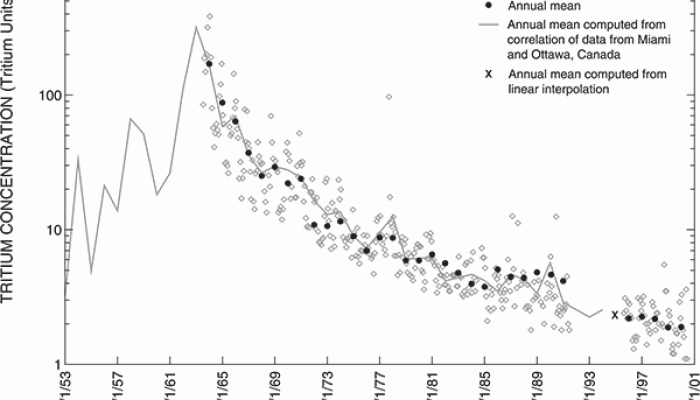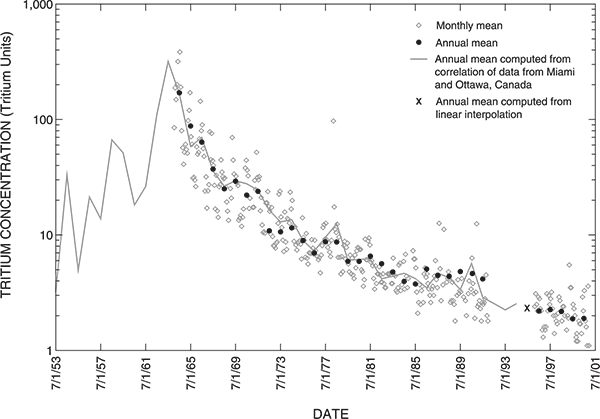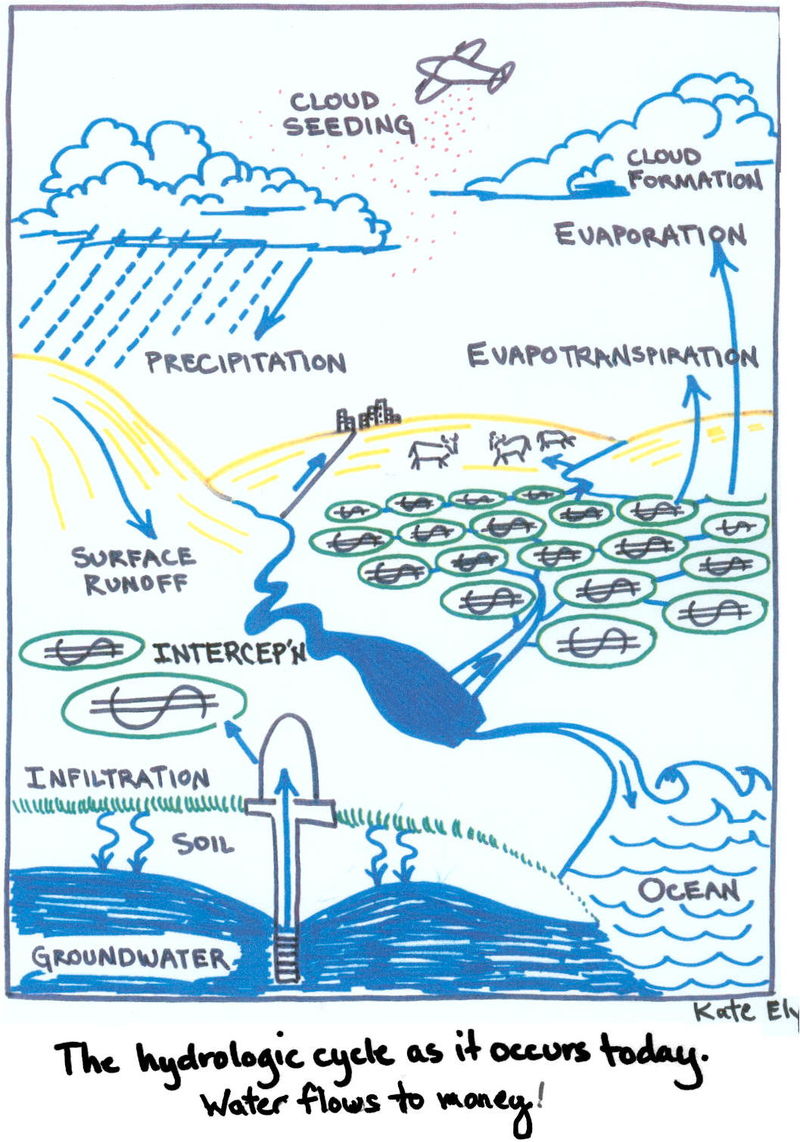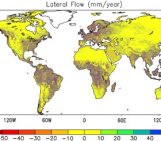
My humanities colleagues and friends are always talking about postmodernism or pomo for short (see this funny satire). I’ve been thinking a lot lately about ‘modern groundwater’ (stay tuned for a cool paper), so I started wondering if there is ‘postmodern groundwater’.
Modern groundwater is groundwater recharged since the huge spike it tritium in the early 1960’s due to above ground thermonuclear testing. But tritium has a short half-life, so atmospheric tritium concentrations have largely decayed back to pre-bomb spike concentrations (see graph below). So does this mean that we are in the age of postmodern groundwater or pomo gw?

Tritium concentrations in precipitation through time (from USGS)
Googling ‘postmodern groundwater’ comes up with nothing, so maybe I’m on to something new. The only thing online that is close seems to be Michael Campana’s more political and very interesting ‘Postmodern water cycle” shown here:

The Postmodern Water Cycle by Kate Ely, Umatilla Basin hydrologist extraordinaire for the Confederated Tribes of the Umatilla Indian Reservation, as posted on waterwired.





mattcurrell
That’s an excellent graphic!
Maybe a good definition of POMO groundwater is that which contains ‘lifestyle products’ and other ’emerging’ contaminants; persistent organic compounds that are ubiquitous in our chemical society: http://www.sciencedirect.com/science/article/pii/S0269749111007044
It seems these will be rising long after tritium decays and falls away..
Kevin Befus
I think there are definitely some good options. I did some field work in the South Pacific, where we took some tritium samples for age dating. According to them, tritium is going to become an even better groundwater tracer as the concentrations return to normal, especially for the southern hemisphere:
U. Morgenstern, C.J. Daughney, Groundwater age for identification of baseline groundwater quality and impacts of land-use intensification—the National Groundwater Monitoring Programme of New Zealand, J. Hydrol., 456 (2012), pp. 79–93.
U. Morgenstern, C.B. Taylor, Ultra low-level tritium measurement using electrolytic enrichment and LSC, Isot. Environ. Health Stud., 45 (2) (2009), pp. 96–117.
What can be more postmodern than doing the exact same thing as before?
Food for thought.